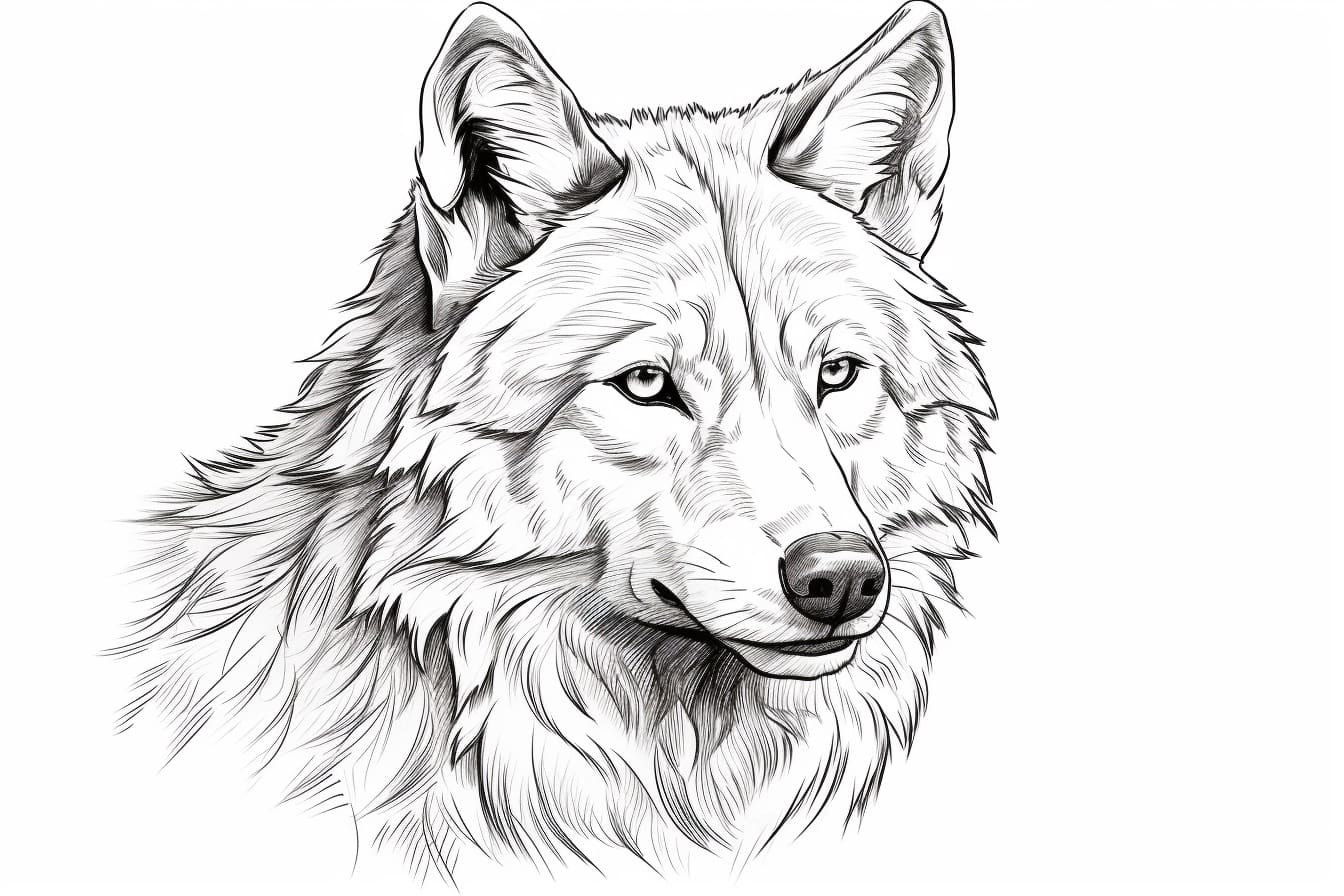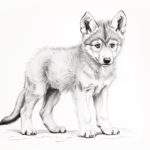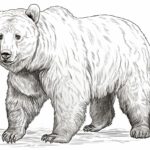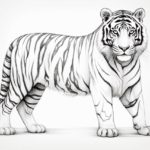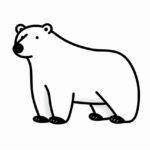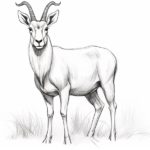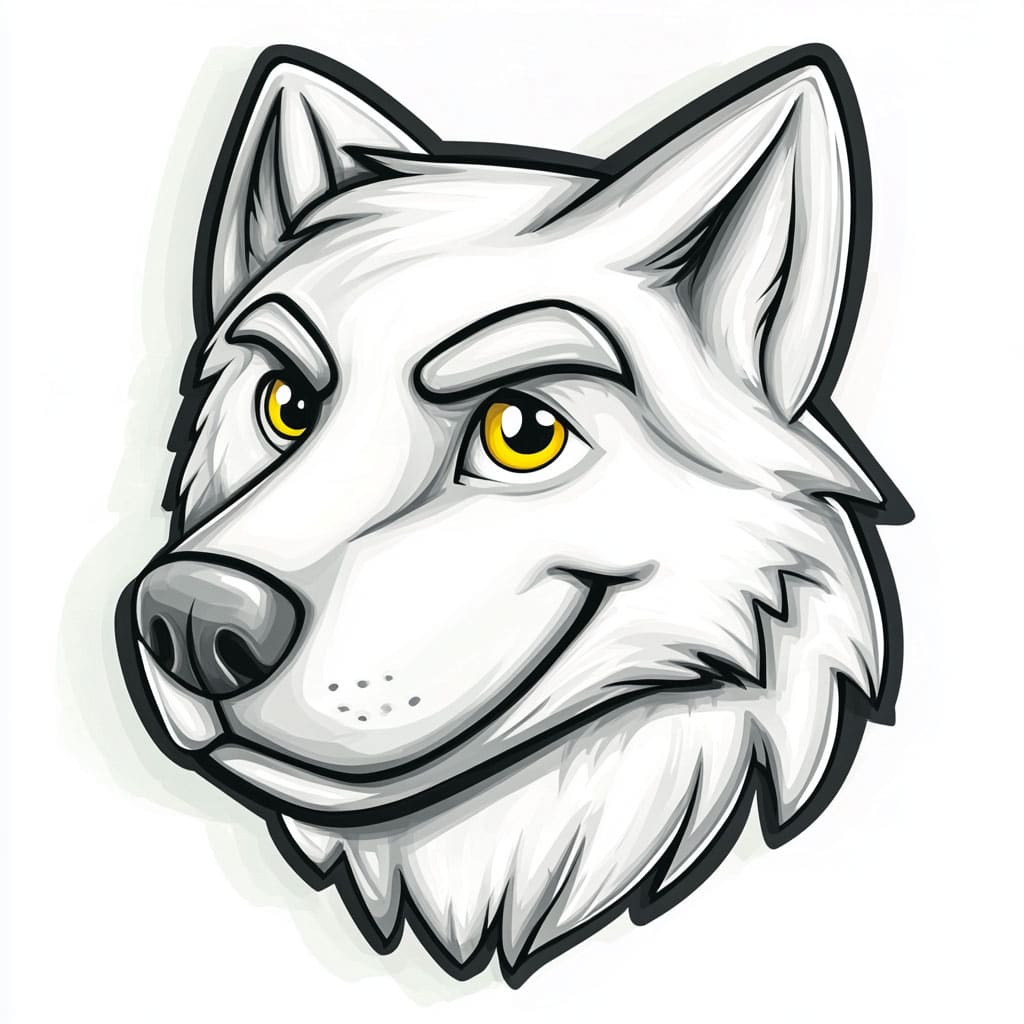
Imagine the Arctic Wolf, a silhouette of strength and grace against an endless expanse of snow, its piercing eyes cutting through the icy stillness. This majestic predator, built to survive in one of Earth’s harshest environments, is an artist’s dream subject. Its thick, wind-swept fur, alert stance, and untamed spirit offer endless inspiration to capture power and mystery on paper.
Learning how to draw an Arctic Wolf is more than a creative challenge—it’s an artistic adventure. Every feature tells a story of resilience and majesty, from its sharp, intelligent gaze to its layered coat designed for Arctic survival. This step-by-step guide will explore how to bring this awe-inspiring creature to life through your art. You’ll learn essential techniques for rendering its distinctive fur texture, sculpting its muscular build, and conveying its commanding presence with bold, confident strokes.
So, grab your pencils, find your creative focus, and step into the frozen wilderness of the Arctic. Let’s unleash the spirit of the Arctic Wolf onto your page and create a masterpiece worthy of the wild!
Materials Required
To draw an Arctic Wolf, you will need the following materials:
- Drawing paper or sketchbook
- Pencils (preferably a range of graphite pencils such as 2H, HB, 2B, 4B, and 6B for varying shades)
- Eraser (both a kneaded eraser and a white vinyl eraser)
- Blending tools such as blending stumps or tortillons
- Reference photo of an Arctic Wolf for accurate details and proportions
- Optional: colored pencils or markers for adding color to your drawing
With these materials, you will be well-equipped to create a realistic and detailed drawing of an Arctic Wolf. Your graphite pencils, ranging from 2H to 6B, will be your tools for building depth, defining shadows, and refining fur texture. Blending tools such as stumps are crucial for creating the soft gradients that mimic the wolf’s dense coat, while a kneaded eraser can help you lift highlights, making the fur gleam in the Arctic sunlight.
How to Draw an Arctic Wolf: a Step-by-step Guide
Step 1: Gather Your Materials
Start by gathering all the necessary materials for drawing an Arctic Wolf. You will need a pencil, eraser, drawing paper, and reference images of Arctic Wolves for inspiration.
Step 2: Sketch the Basic Shapes
Begin by lightly sketching the basic shapes of the Arctic Wolf using your pencil. Start with an oval for the head and add a larger oval for the body. Add smaller ovals for the limbs and a long curved line for the tail.
Step 3: Add Details to the Head
Focus on the details of the head next. Add triangular shapes for the ears and a pointed snout. Draw in the eyes, nose, and mouth, paying attention to the placement and proportions. When sketching the ears, note how the fur often covers the tips, making them appear more rounded than triangular. The snout should taper softly, suggesting the Arctic Wolf’s refined sense of smell. The eyes are narrow, with sharp pupils that give the wolf its intense, focused expression. Add a gleam of light to the eyes, hinting at their keen sight and intelligence.
Step 4: Define the Body and Limbs
Refine the body and limbs of the Arctic Wolf by adding more details. Draw in the fur texture using short, quick strokes to create a sense of volume and depth. Pay attention to the shape of the legs and paws, adding claws for realism.
Step 5: Add Fur Texture
Continue adding fur texture to the entire body of the Arctic Wolf. Use varying lengths of strokes to create a realistic fur texture, especially around the neck, chest, and tail. Pay attention to the direction of the fur growth to enhance the natural look.
Step 6: Refine Details and Features
Take your time to refine the details and features of the Arctic Wolf. Add more depth to the eyes by shading around them and adding highlights for a lifelike effect. Define the facial features further and add any additional details to make your drawing more realistic.
Step 7: Finalize and Erase Guidelines
Once you are satisfied with the overall look of your Arctic Wolf drawing, go over the lines with a darker pencil or pen to finalize the details. Erase any remaining guidelines and unnecessary sketch lines to clean up the drawing.
Step 8: Add Shadows and Highlights
To add depth and dimension to your drawing, carefully add shadows and highlights. Shade darker areas under the body, limbs, and around the eyes to create a sense of volume. Add highlights to the fur and other areas to enhance the realism of your Arctic Wolf drawing.
Tip: When adding shadows, use a soft hand to build up layers gradually. This helps create a smooth transition from light to dark, mimicking the softness of the wolf’s fur. In contrast, the shadows around the eyes, nose, and under the belly should be sharper to emphasize the depth and structure of these areas.
Step 9: Sign Your Artwork
Finally, sign your artwork in a discreet corner with your name or initials to complete your drawing of an Arctic Wolf. Step back and admire your work, making any final adjustments if necessary.
Howl of Success: Your Arctic Wolf Awaits
Congratulations—you’ve successfully brought the fierce majesty of the Arctic Wolf to life on paper! Drawing such a powerful and enigmatic creature is no small feat, and your dedication to capturing its strength and grace shines through every line and shadow.
Remember, mastering the Arctic Wolf’s distinctive features—its thick, layered fur, intense gaze, and commanding stance—takes practice and patience. Every attempt brings you closer to creating even more lifelike and expressive representations. Pay close attention to fur texture, facial details, and body proportions to convey both the wolf’s power and its untamed spirit.
Keep refining your technique, experiment with new poses, and explore different environments to place your wolf in its natural Arctic habitat. Most importantly, enjoy the creative journey—each stroke is a step deeper into the wild heart of the frozen north. Happy drawing, and may your artistic howl be heard far and wide!
Fun Facts About Arctic Wolves
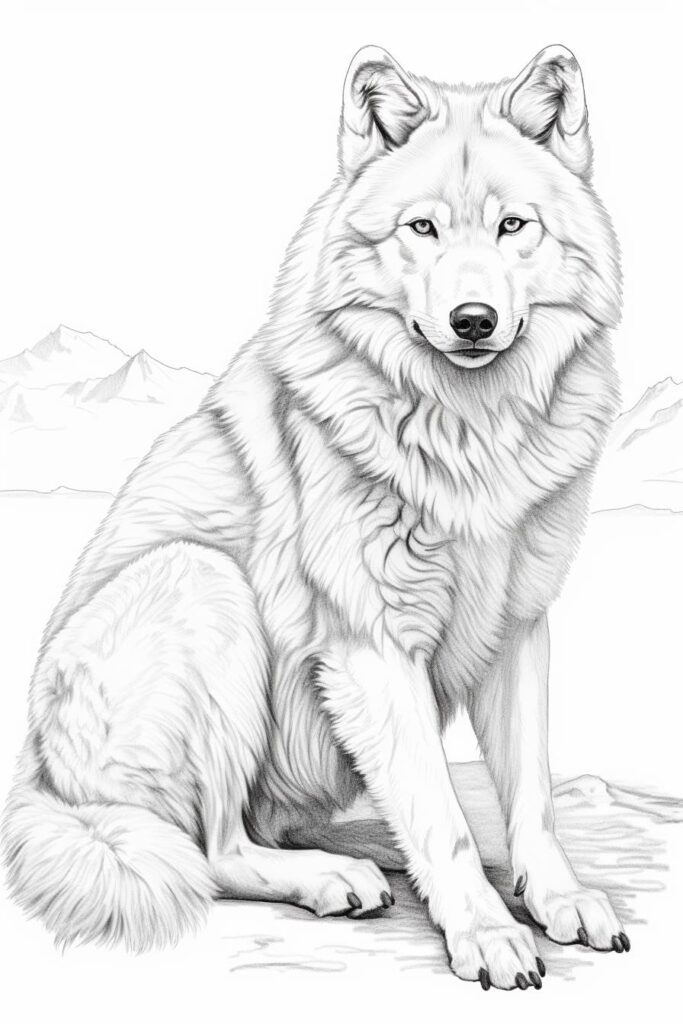
- Arctic Wolves have a thick, white fur coat that helps them blend in with their snowy surroundings, making them well-adapted to their cold environment.
- They are highly social animals and live and hunt in packs, which can consist of 2 to 20 members.
- Arctic Wolves have a keen sense of smell, excellent eyesight, and sharp hearing, which help them locate prey such as musk oxen, Arctic hares, and caribou in their vast tundra habitat.
- They are skilled hunters and work together as a team to take down larger prey that may be too challenging for a single wolf to tackle alone.
- Arctic Wolves have a specialized metabolism that allows them to survive in extreme cold temperatures, with adaptations such as a compact body shape, small ears, and a thick fur coat.
- They are known for their hauntingly beautiful howls, which they use to communicate with other pack members over long distances and to establish territory boundaries.
- Arctic Wolves have a lifespan of around 7 to 10 years in the wild, but they can live longer in captivity.
- These wolves are considered a keystone species in the Arctic ecosystem, playing a crucial role in maintaining the balance of their ecosystem by controlling the populations of prey species.
- Arctic Wolves are not usually a threat to humans and tend to avoid contact with people, but they can become more aggressive if they feel threatened or if their pack is in danger.
- Climate change and human encroachment on their habitat are the main threats to Arctic Wolves, as shrinking sea ice and industrial development can disrupt their hunting grounds and lead to conflicts with humans.
Suggestions for Scenes and Settings for Arctic Wolf Drawings
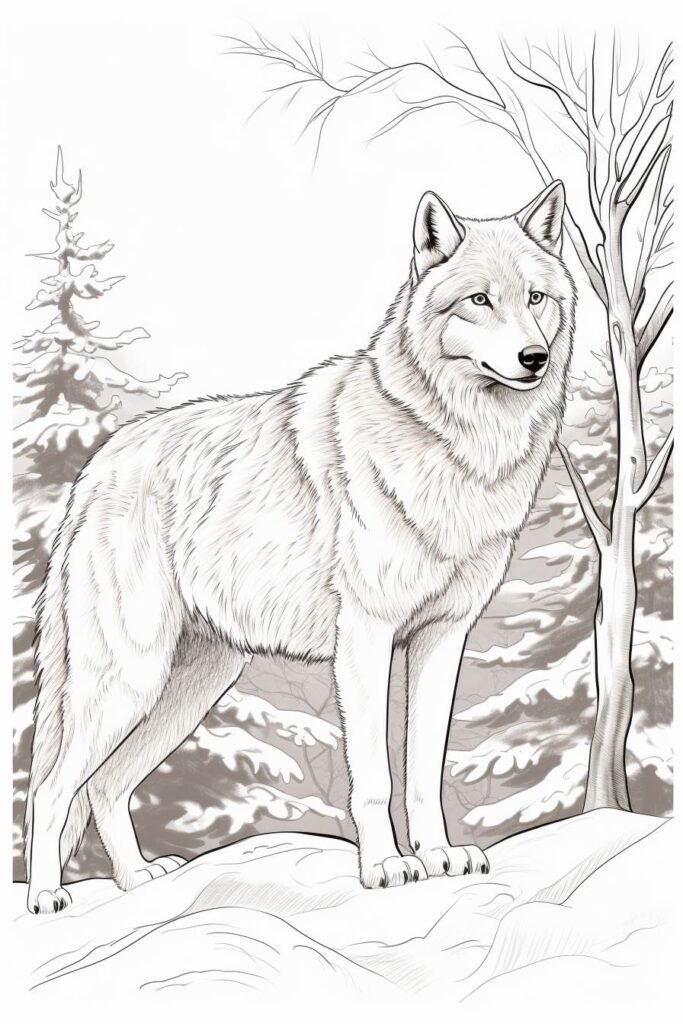
- Arctic Wolf in a snowy forest: Capture the majestic creature blending into the white landscape, surrounded by tall pine trees and a light dusting of snow.
- Arctic Wolf on an icy tundra: Show the wolf standing proudly on a vast expanse of frozen terrain, with distant mountains and a clear blue sky in the background.
- Arctic Wolf hunting on a frozen lake: Depict the wolf crouched low to the ground, eyes focused on its prey beneath the ice, with the shimmering surface reflecting the winter sun.
- Arctic Wolf howling under the Northern Lights: Imagine the wolf silhouetted against a colorful sky filled with swirling auroras, creating a magical and ethereal atmosphere.
- Arctic Wolf in a blizzard: Illustrate the wolf braving a fierce snowstorm, with swirling winds and snowflakes creating a sense of movement and drama in the scene.
- Arctic Wolf resting in an ice cave: Show the wolf curled up inside a sparkling ice cave, with icicles hanging from the ceiling and a soft glow of light filtering through the entrance.
- Arctic Wolf interacting with other Arctic animals: Create a scene where the wolf is seen alongside other Arctic creatures such as polar bears, seals, or snowy owls, showcasing the diversity of wildlife in the region.
- Arctic Wolf in a traditional Inuit village: Imagine the wolf peacefully coexisting with the indigenous people of the Arctic, surrounded by igloos, sled dogs, and the unique culture of the community.
- Arctic Wolf in a fantasy Arctic landscape: Let your imagination run wild and create a fantastical scene where the wolf roams a magical Arctic realm filled with enchanted ice formations, mystical creatures, and otherworldly phenomena.
- Arctic Wolf in a climate change affected Arctic: Raise awareness about environmental issues by depicting the wolf in a setting where melting ice, shrinking habitats, or other consequences of climate change are visible, highlighting the importance of conservation efforts.

